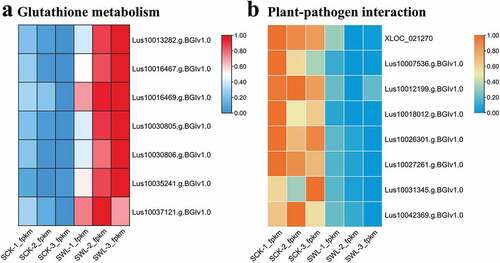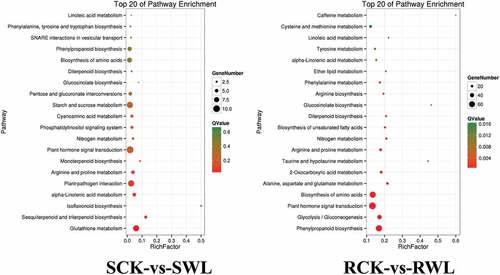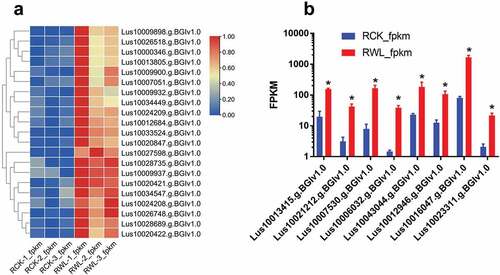Figures & data
Figure 1. The phenotype for flax in fast growth period under water logging condition. (a) Phenotype. (b) SPAD. (c) Height. (d) Total biomass for per plant.
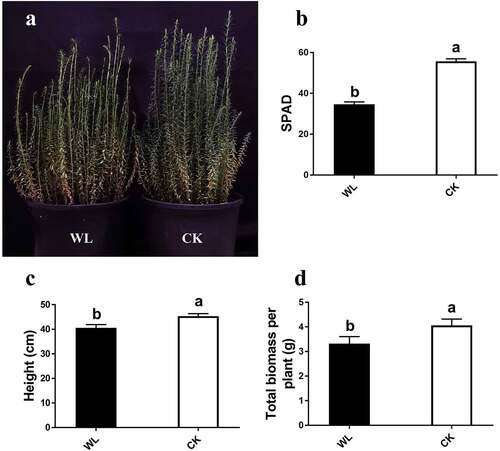
Figure 2. The phenotype for flax in harvest stage under water logging condition. (a) Height and technical length. (b) Forks and diameter. (c) Dry weight for different periods.
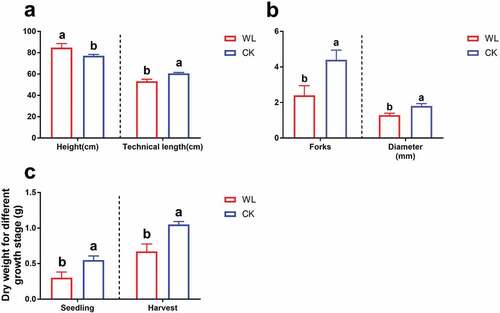
Figure 3. The differences between groups. (a) The number of difference genes in groups. (b) PCA analysis in groups.
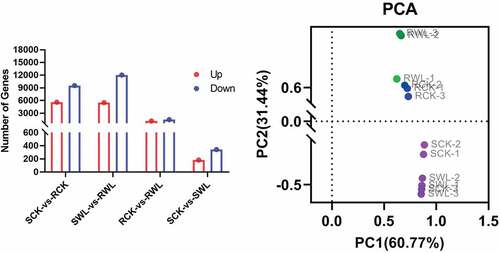
Figure 4. Gene classification based on Gene Ontology (GO) for differentially expressed genes (DEGs) in four types of samples.

Figure 6. The FPKM of glutathione metabolism (a) and Plant-pathogen interaction (b) in shoot under water-logging conditions.
